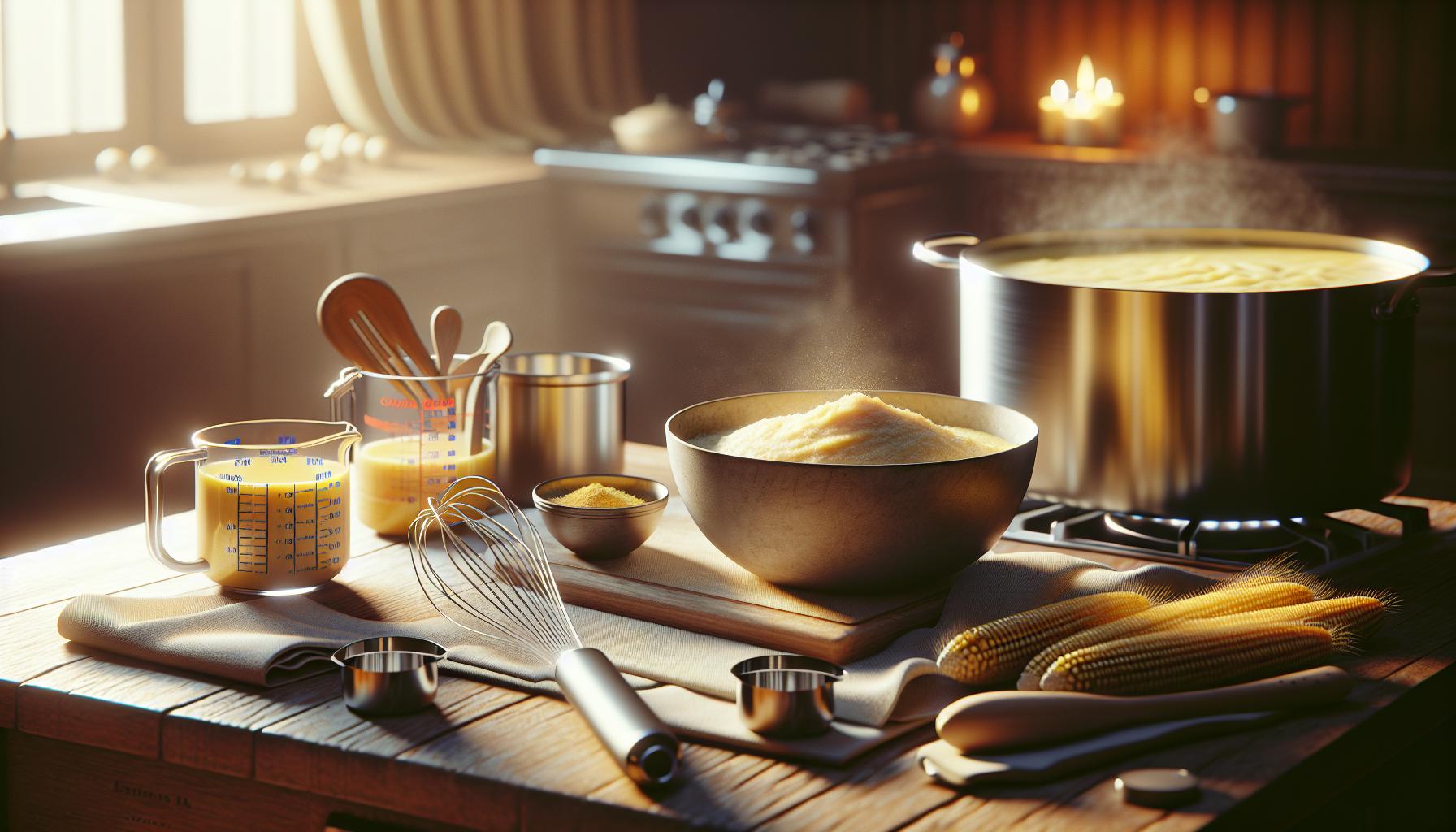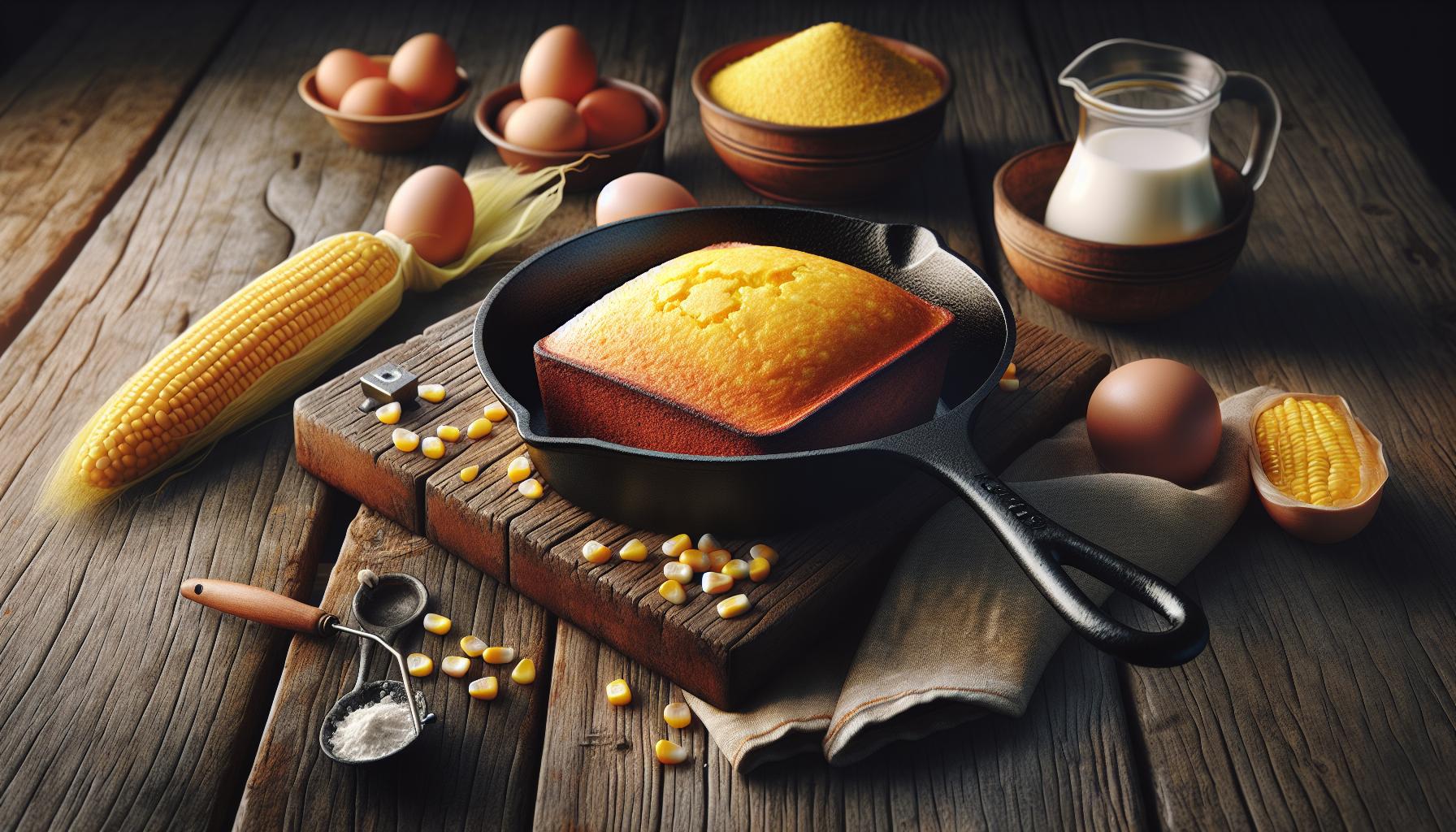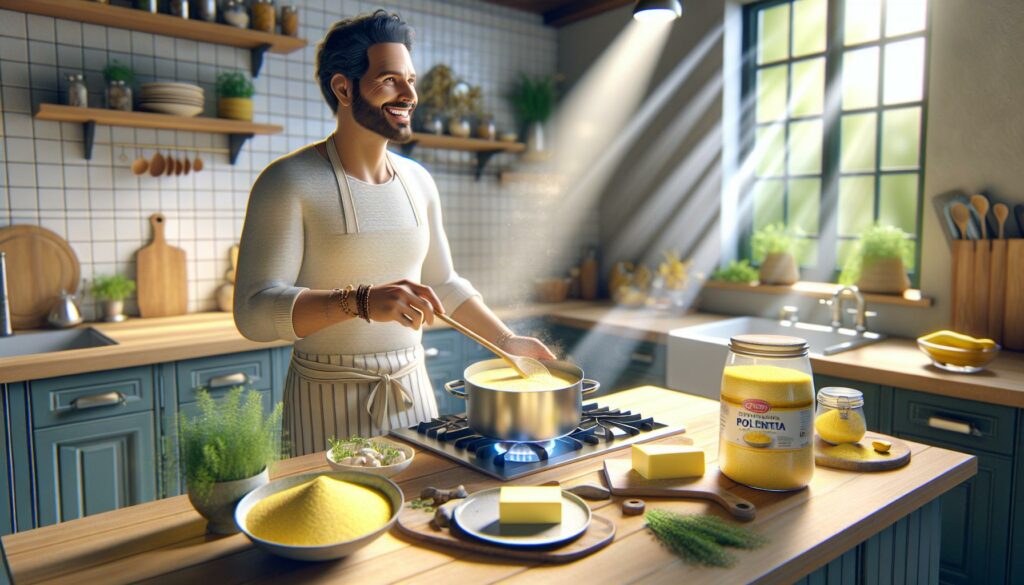Transforming humble cornmeal into delicious dishes isn’t rocket science, but it does require some know-how to avoid turning it into a gritty mess. This versatile ingredient has been a staple in kitchens worldwide, from creamy polenta to crispy cornbread and everything in between.
Whether you’re a seasoned chef or just starting your culinary journey, mastering basic cornmeal cooking techniques can open up a world of possibilities. From achieving the perfect consistency to avoiding common pitfalls like lumps and sticking, understanding these fundamental methods will help anyone create mouthwatering cornmeal-based dishes that’ll have family and friends begging for seconds.
General Cooking Techniques for Cornmeal
Cornmeal consists of dried corn kernels ground into a fine powder through stone-grinding or steel roller milling. This versatile ingredient comes in multiple grinds and colors, each suited for specific culinary applications.
Fine vs Medium vs Coarse Grind
Fine cornmeal features particles measuring less than 1 millimeter, creating smooth textures in cakes, muffins or cookies. Medium grind particles range between 1-2 millimeters, making them ideal for cornbread, hush puppies or coating fried foods. Coarse cornmeal contains particles larger than 2 millimeters, perfect for creating traditional polenta or grits with notable texture. Each grind size affects cooking time:
| Grind Type | Cooking Time | Best Uses |
|---|---|---|
| Fine | 10-15 minutes | Baked goods |
| Medium | 15-20 minutes | Cornbread, coating |
| Coarse | 30-40 minutes | Polenta, grits |
White vs Yellow Cornmeal
White cornmeal comes from white corn varieties, offering a mild, subtle corn flavor suitable for delicate dishes. Yellow cornmeal, produced from yellow corn kernels, delivers a stronger, more pronounced corn taste with higher beta carotene content. The color difference affects presentation:
| Type | Flavor Profile | Visual Impact |
|---|---|---|
| White | Subtle, neutral | Light, pale results |
| Yellow | Bold, rich | Golden, vibrant results |
Regional preferences influence usage patterns – Southern United States favors white cornmeal for traditional recipes while Northern regions predominantly use yellow varieties for cornbread recipes.
Basic Preparation Methods for Cornmeal

Cornmeal transforms into diverse dishes through two primary cooking methods: stovetop preparation and baking applications. Each technique creates distinct textures and flavors depending on the cornmeal grind size and cooking duration.
Stovetop Cooking Techniques
Stovetop cornmeal preparation starts with a 3:1 ratio of liquid to cornmeal for optimal consistency. Boiling water or stock creates the base, followed by a steady stream of cornmeal while whisking continuously to prevent lumps. Maintaining medium-low heat for 15-20 minutes produces creamy polenta, while extending cooking time to 30 minutes yields firmer results. Professional chefs combine cornmeal with cold liquid first, creating a slurry that eliminates lumps when added to hot liquid. Regular stirring prevents sticking and promotes even cooking throughout the process.
Baking With Cornmeal
Baking with cornmeal requires precise measurements to achieve proper texture in finished products. Fine-ground cornmeal produces tender cornbread when mixed with flour in a 1:1 ratio. Adding 1 tablespoon of cornmeal to cake or cookie recipes creates crispy exterior textures. Professional bakers incorporate cornmeal into pizza dough bases at 20% of total flour weight for extra crunch. Preheating cast iron skillets or baking pans to 425°F ensures golden-brown crusts on cornbread. Moisture content affects baking time, with drier batters requiring 20-25 minutes at 375°F for complete doneness.
Essential Cornmeal Cooking Tips

Mastering cornmeal cooking techniques requires attention to precise measurements and proper preparation methods. These fundamental tips ensure consistent results across various cornmeal dishes.
Proper Liquid-to-Cornmeal Ratios
Different cornmeal dishes demand specific liquid ratios for optimal texture. Polenta requires 4 cups of liquid per cup of cornmeal for a creamy consistency. Cornbread calls for 1¼ cups of liquid per cup of cornmeal mixture. Hush puppies use ¾ cup of liquid per cup of cornmeal for a firm texture. Here’s a quick reference guide:
| Dish Type | Liquid-to-Cornmeal Ratio | Texture Result |
|---|---|---|
| Polenta | 4:1 | Creamy |
| Cornbread | 1.25:1 | Tender |
| Hush Puppies | 0.75:1 | Firm |
| Corn Mush | 3:1 | Smooth |
Common Cooking Mistakes to Avoid
Lumpy cornmeal results from adding cornmeal too quickly to hot liquid. Adding cornmeal gradually while whisking prevents clumping. Burnt cornmeal occurs from high heat exposure without proper stirring. Using medium heat reduces scorching risk. Undercooked cornmeal tastes grainy due to insufficient cooking time. Cornmeal requires 25-30 minutes of cooking to achieve proper doneness. Overly thick mixtures stem from incorrect measurements. Using calibrated measuring cups ensures proper consistency. Sticking occurs when pans lack proper greasing or preheating. A well-greased heated pan creates a non-stick surface for cornmeal dishes.
Popular Cornmeal Dishes and Applications

Cornmeal transforms into diverse culinary creations across global cuisines. These applications showcase the ingredient’s versatility in both traditional cooking methods and modern interpretations.
Traditional Cornbread Methods
Southern-style cornbread starts with preheating a cast-iron skillet at 450°F with bacon grease or oil. The basic recipe combines yellow cornmeal, buttermilk, eggs and minimal sugar in a 2:1 cornmeal-to-flour ratio. Northern-style cornbread incorporates more sugar and flour, creating a cake-like texture. Skillet cornbread develops a crispy crust when the batter hits the hot pan, while baking in regular pans produces a softer exterior. Cast iron cornbread requires 20-25 minutes of baking time, with a golden brown top indicating doneness. Professional bakers test readiness by inserting a toothpick in the center – it emerges clean when fully baked.
Polenta and Grits Techniques
Polenta preparation demands constant stirring of coarse cornmeal in simmering water or stock at a 4:1 liquid-to-cornmeal ratio. Italian-style polenta cooks for 45 minutes, developing a smooth consistency through continuous whisking. Southern grits use a similar technique but employ white cornmeal with a 5:1 liquid ratio for extra creaminess. Restaurants serve polenta in three distinct styles: creamy, firm or grilled. Creamy polenta maintains a porridge-like texture, firm polenta sets in a mold, and grilled polenta slices achieve crispy exteriors after cooling and pan-searing. Expert chefs finish polenta with butter, cheese or herbs to enhance flavor profiles.
Storage and Shelf Life Best Practices
Proper cornmeal storage extends its shelf life up to 12 months when kept in an airtight container at room temperature. Vacuum-sealed packages maintain freshness for 2-5 years by preventing moisture exposure.
Temperature and Container Requirements
Room temperature storage (60-70°F) preserves cornmeal’s quality in sealed glass jars glass containers or heavy-duty freezer bags. Refrigeration extends shelf life to 18 months while freezer storage keeps cornmeal fresh for up to 24 months.
Signs of Spoilage
Fresh cornmeal exhibits these characteristics:
- Sweet nutty aroma
- Light yellow or white color depending on variety
- Dry powdery texture
- No visible mold or dark spots
- No rancid or musty smell
Discard cornmeal when these signs appear:
- Unusual odors
- Discoloration or dark spots
- Clumping or moisture presence
- Visible mold growth
- Insects or insect eggs
Storage Location Tips
Optimal storage spaces include:
- Cool pantry shelves
- Dark kitchen cabinets
- Sealed containers in refrigerators
- Moisture-free basement areas
- Temperature-controlled storage rooms
| Storage Method | Temperature | Shelf Life |
|---|---|---|
| Pantry | 60-70°F | 12 months |
| Refrigerator | 40°F | 18 months |
| Freezer | 0°F | 24 months |
- Direct sunlight
- Heat sources
- Humid areas
- Chemical products
- Strong-smelling foods
Rich Heritage and cContemporary Applications
Mastering cornmeal cooking techniques opens up a world of culinary possibilities. From perfectly creamy polenta to golden-brown cornbread these foundational skills enable home cooks to create delicious dishes with confidence.
Understanding proper ratios storage methods and cooking temperatures helps achieve consistent results every time. Whether someone’s preparing a traditional Southern cornbread or experimenting with modern polenta variations they’ll find that cornmeal’s versatility makes it an invaluable pantry staple.
Armed with these techniques and tips anyone can transform simple cornmeal into impressive dishes that celebrate this versatile ingredient’s rich heritage and contemporary applications.

